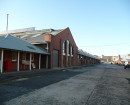PARK HILL (ORIGINAL SITE)
Schuller's Road YULECART, Southern Grampians Shire
-
Add to tour
You must log in to do that.
-
Share
-
Shortlist place
You must log in to do that.
- Download report
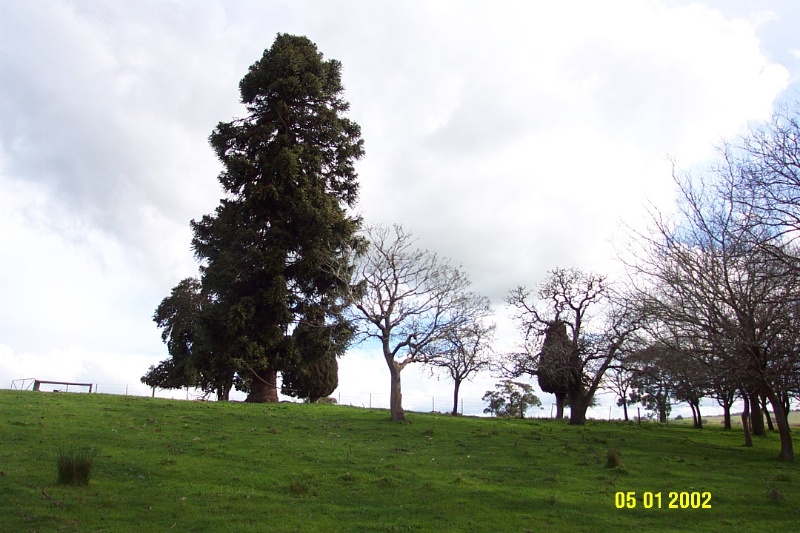

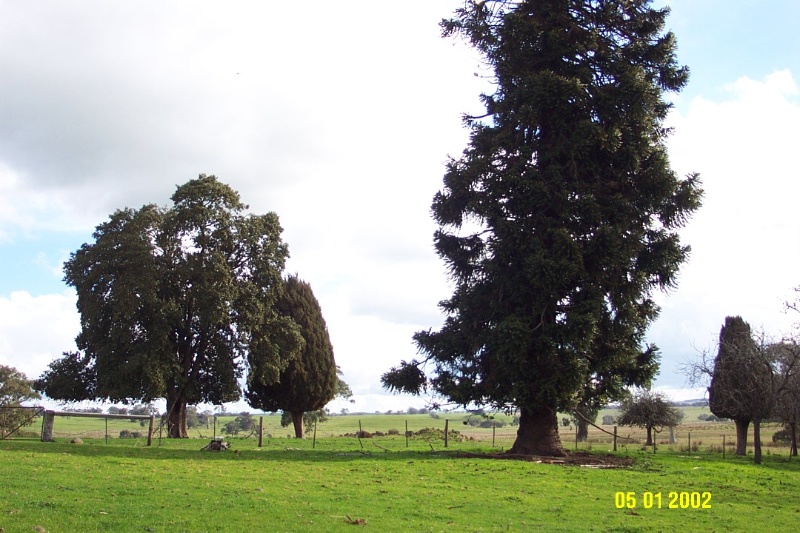
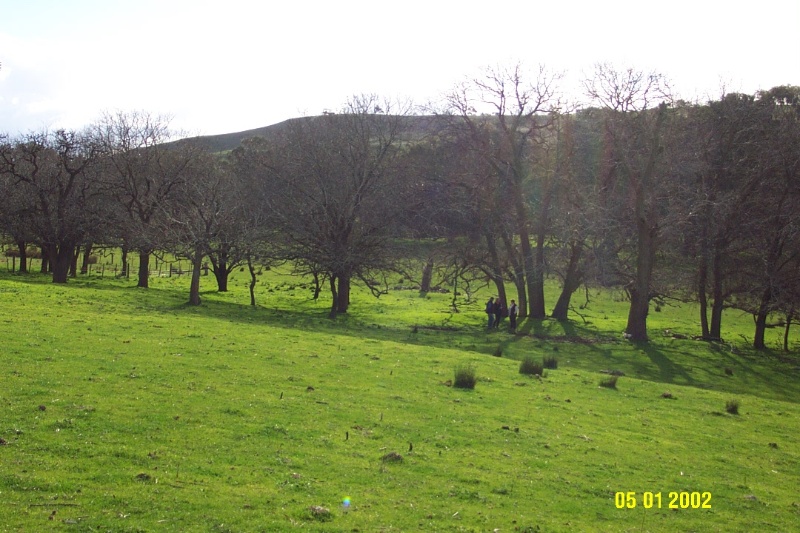
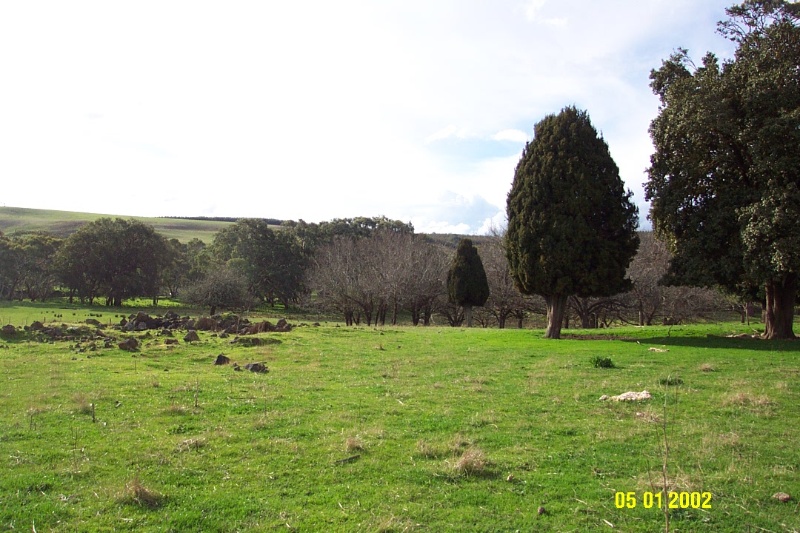
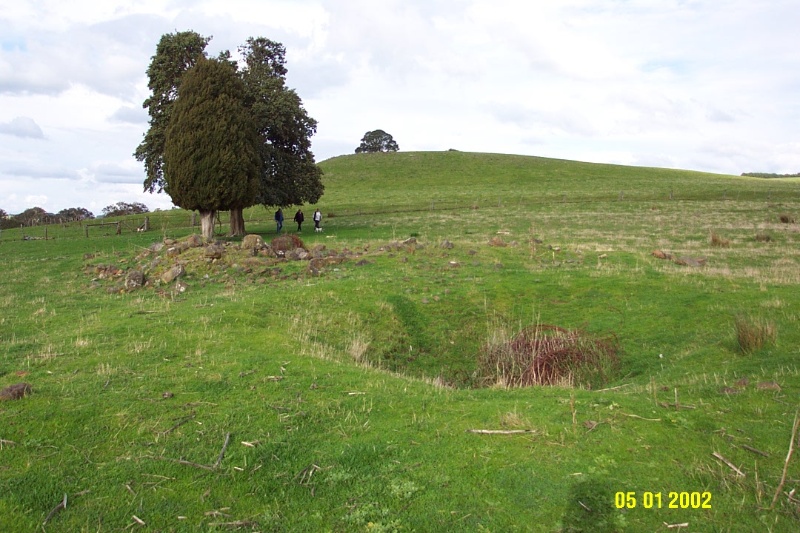
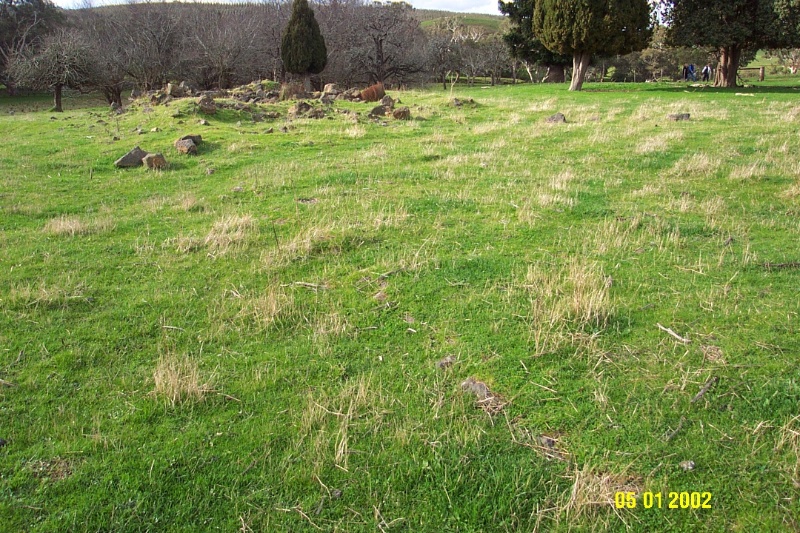
Statement of Significance
What is significant?
The original homestead site of the Park Hill squatting run is located on the south side of the River Wannon approximately 14 kilometres west of Yulecart and 10 kilometres south-south-west of Wannon. It is adjacent to but not contiguous with the Murndal or Spring Valley pre-emptive which is downstream and to the west. The Park Hill run was taken up as early as 1841 by the Thomson brothers, confirmed in 1848 and consolidated under Alexander Thomson who owned the lease outright by 1858. In 1863 it passed to Thomas Must of Portland. The lease was cancelled in 1872. From very early times there was a crossing for stock over the River Wannon at the homestead. The ruined house and surviving trees may date from this time or earlier. (Nothing is currently known about the history and architecture of the house.) In 1912 a new house was built high on the opposite bank of the River Wannon. The old house was last occupied in the early 1930s and was abandoned and in ruins by 1940.
How is it significant?
The original site of Park Hill homestead is of historical and archaeological significance to the Southern Grampians Shire.
Why is it significant?
The original site of Park Hill homestead is historically significant as one of the earliest runs in the area, for its associations with key individuals and as an example of an abandoned homestead site. It is of archaeological significance for the information it may reveal about the early squatting period generally, the establishment at Park Hill in particular and the stock crossing over the River Wannon.
-
-
PARK HILL (ORIGINAL SITE) - Physical Conditions
The original homestead site has significant archaeological potential.
PARK HILL (ORIGINAL SITE) - Physical Description 1
The original Park Hill site is located about about 500m from the south bank on slightly rising ground. It is approached by tracks from the Murndal Road. The site includes the stone and brick ruins of the original house (probably post 1872 but possibly earlier) and some surviving trees including an unusual Paranza Pine, Araucaria angustifolia, several Bhutan Cypress, Cupressus toroulosa, a Norfolk Island Hibiscus, Lagunaria pattersonia, the remnants of an avenue of Elms, Ulmus procera, leading to the river crossing and a few fruit trees of unknown species. Only the footings of the house now survive. A photograph held by the Bailey family taken in 1940 shows a substantial bluestone house with high, single storey walls and several chimneys still standing but with no roof. The house seems to have been typical for the period. There is a crossing for stock over the Wannon River associated with the homestead site. It is said that there is a lone grave in front of the house but this has not been confirmed and may be apocryphal. Some distance to the west of the site there is a billabong which was used as a sheep wash.
PARK HILL (ORIGINAL SITE) - Historical Australian Themes
The original Park Hill site is located about about 500m from the south bank on slightly rising ground. It is approached by tracks from the Murndal Road. The site includes the stone and brick ruins of the original house (probably post 1872 but possibly earlier) and some surviving trees including an unusual Paranza Pine, Araucaria angustifolia, several Bhutan Cypress, Cupressus toroulosa, a Norfolk Island Hibiscus, Lagunaria pattersonia, the remnants of an avenue of Elms, Ulmus procera, leading to the river crossing and a few fruit trees of unknown species. Only the footings of the house now survive. A photograph held by the Bailey family taken in 1940 shows a substantial bluestone house with high, single storey walls and several chimneys still standing but with no roof. The house seems to have been typical for the period. There is a crossing for stock over the Wannon River associated with the homestead site. It is said that there is a lone grave in front of the house but this has not been confirmed and may be apocryphal. Some distance to the west of the site there is a billabong which was used as a sheep wash.
h Theme 3: Developing local, regional and national economies
3.5 Developing primary production
3.5.1 Grazing stock
Theme 4: Building settlements, towns and cities
4.5 Making settlements to serve rural Australia
PARK HILL (ORIGINAL SITE) - Usage/Former Usage
Abandoned homestead site. Land now used for grazing.
PARK HILL (ORIGINAL SITE) - Integrity
only ruins of house and some trees remaining
PARK HILL (ORIGINAL SITE) - Physical Description 2
William Thomson and executors
Alexander and Robert Thompson
Alexander Thomson
Thomas Must
Charles Alexander Nicholson McDonald
Archibald (Dingo) Lindsay
Johannes Reinhold and Harold Phillip Linke
Charles William Bailey
PARK HILL (ORIGINAL SITE) - Physical Description 3
Park Hill Pre-emptive Right (Former)
Heritage Study and Grading
Southern Grampians - Southern Grampians Shire Heritage Study
Author: Timothy Hubbard P/L, Annabel Neylon
Year: 2002
Grading:
-
-
-
-
-
PARK HILL (ORIGINAL SITE)
 Southern Grampians Shire
Southern Grampians Shire -
Murndall Avenue of Honour
 Vic. War Heritage Inventory
Vic. War Heritage Inventory
-
3 Sherwood Street
 Yarra City
Yarra City -
Archaeological site
 Southern Grampians Shire
Southern Grampians Shire -
BLACKWOOD HOMESTEAD COMPLEX AND CEMETERY
 Southern Grampians Shire
Southern Grampians Shire
-
-
Notes See all notes
dean thomson • 28/12/16
There are possibly three children buried at this site. One gravesite can be seen amongst the elm trees on the east side of the current boundary.This is most likely Robert Thomson 2 years of age died 1855. Also his brother Donald would be nearby 1Yr 1864 and a baby born in 1852.
Public contributions
Notes See all notes
dean thomson • 28/12/16
There are possibly three children buried at this site. One gravesite can be seen amongst the elm trees on the east side of the current boundary.This is most likely Robert Thomson 2 years of age died 1855. Also his brother Donald would be nearby 1Yr 1864 and a baby born in 1852.







